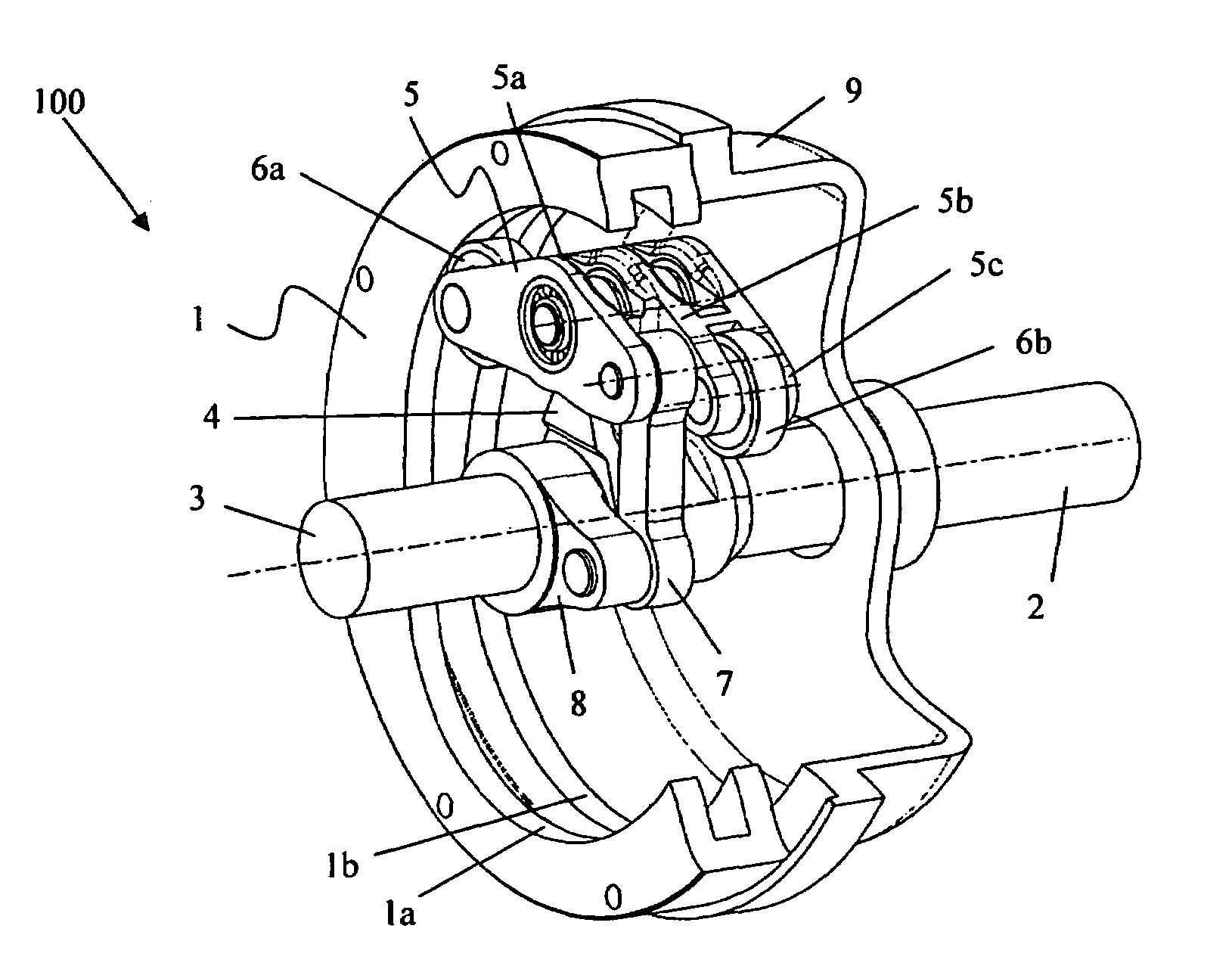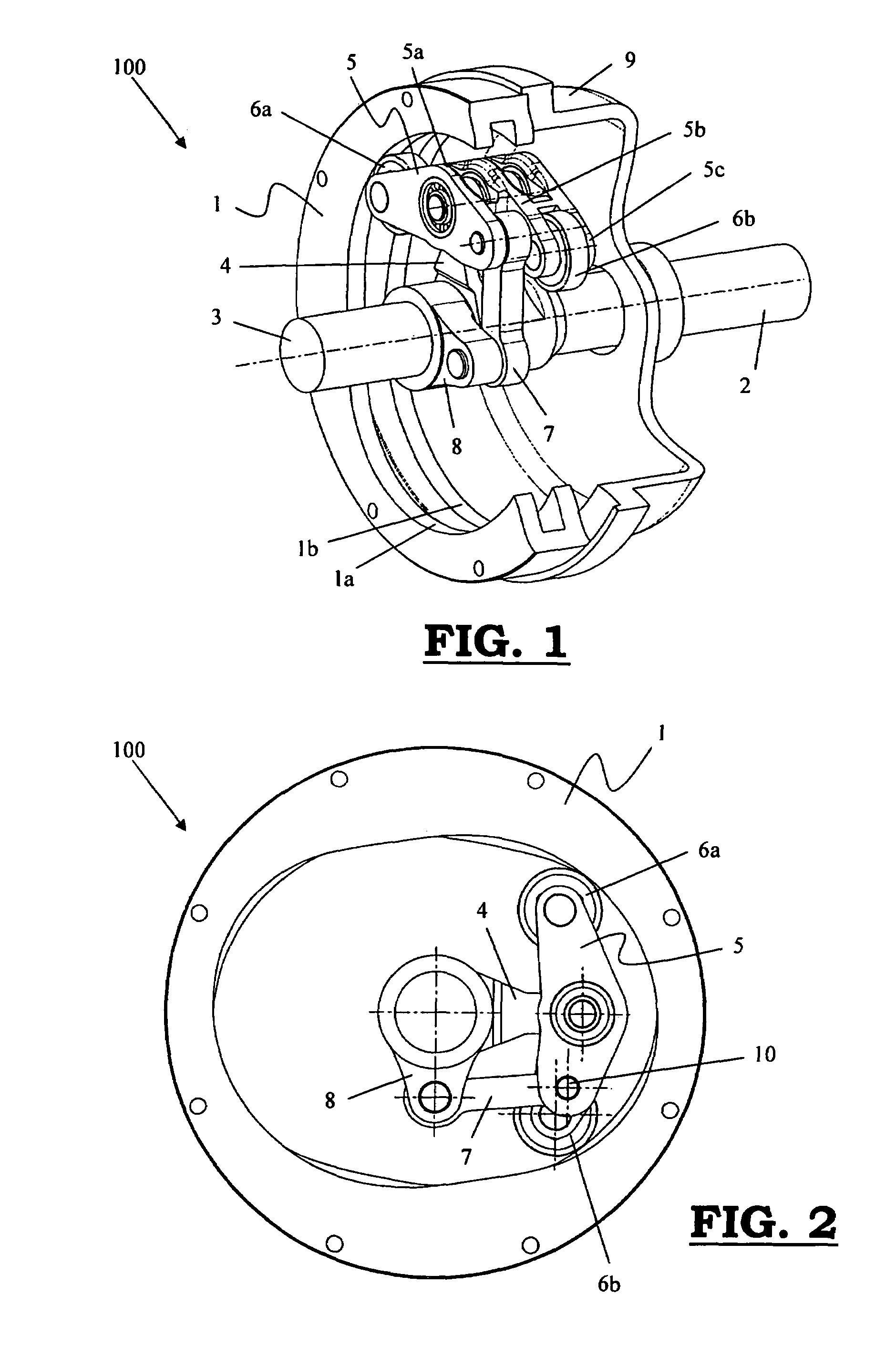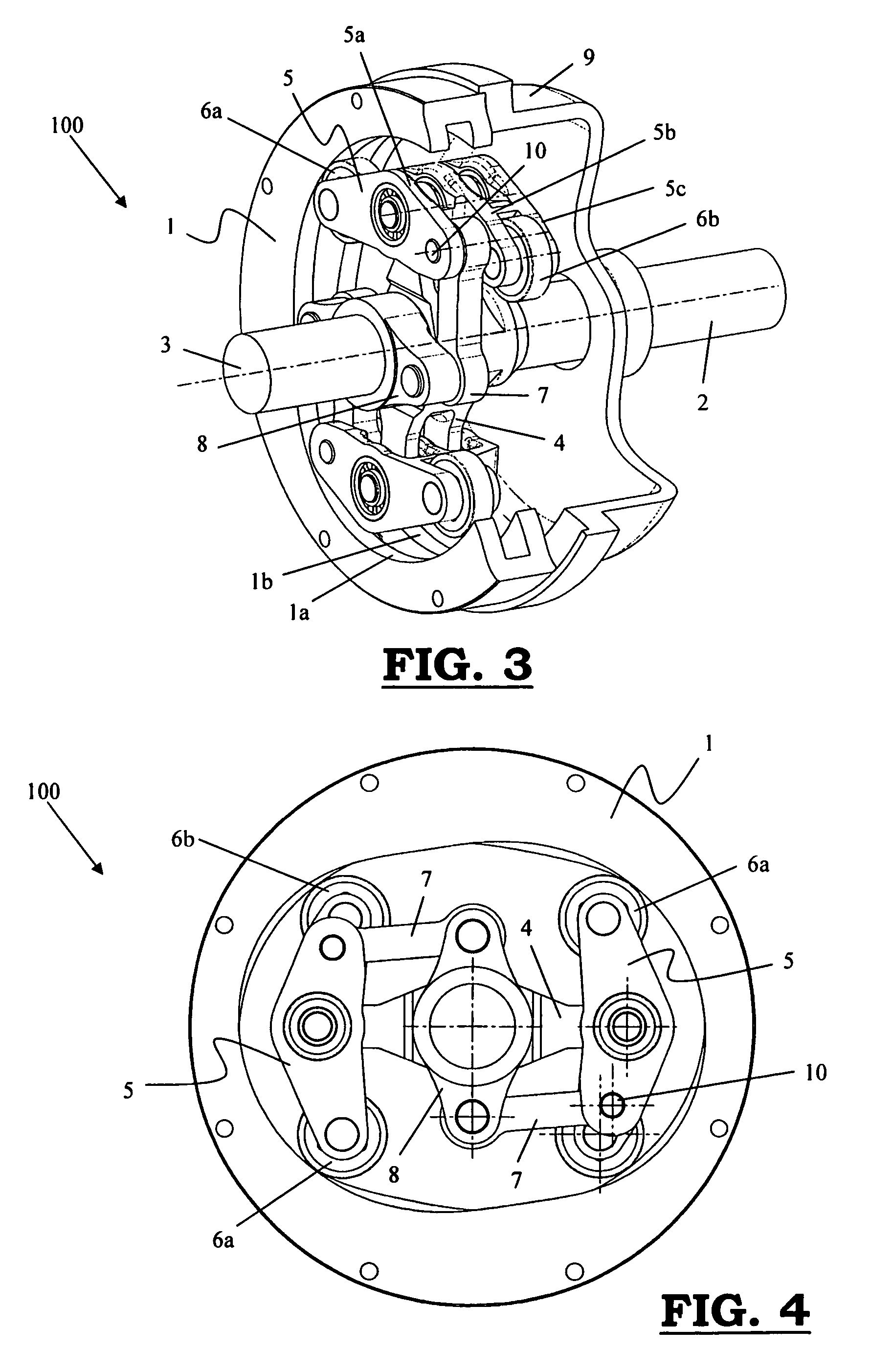Device for modulating a first rotational motion of an input shaft to a second, different from the first, rotational motion of an output shaft in textile machines
a technology of input shaft and output shaft, which is applied in the direction of weaving, looms, dobbies, etc., can solve the problems of inability to control in synchronization, high cost, and risk, and achieve the effect of compact device design and reduced inertia
- Summary
- Abstract
- Description
- Claims
- Application Information
AI Technical Summary
Benefits of technology
Problems solved by technology
Method used
Image
Examples
Embodiment Construction
[0069]As represented in the FIG. 1 up to and including 9, a device (100) according to the invention for modulating a first rotational motion of an input shaft (2) to a second rotational motion, different from the first, of an output shaft (3) in textile machines, is comprising, on the one hand, a fixed complementary cam (1) provided with at least two cam profiles (1a, 1b) and at least one cam follower (5) which is linked to the input shaft and the output shaft (2, 3) and which is provided with at least two contact rollers (6a, 6b), each following a different cam profile (1a, 1b) because of which the said cam followers (5) are performing a rocking motion, on the other hand. The said cam profiles (1a, 1b) are internal cam profiles. The said cam followers (5) are linked to the input shaft (2), preferably in a hinged manner, by means of a support (4). The said cam followers (5) are further driving a link (7, 7a, 7b) which is linked to a support (8) on the output shaft (3) and are imposi...
PUM
 Login to View More
Login to View More Abstract
Description
Claims
Application Information
 Login to View More
Login to View More - R&D
- Intellectual Property
- Life Sciences
- Materials
- Tech Scout
- Unparalleled Data Quality
- Higher Quality Content
- 60% Fewer Hallucinations
Browse by: Latest US Patents, China's latest patents, Technical Efficacy Thesaurus, Application Domain, Technology Topic, Popular Technical Reports.
© 2025 PatSnap. All rights reserved.Legal|Privacy policy|Modern Slavery Act Transparency Statement|Sitemap|About US| Contact US: help@patsnap.com



